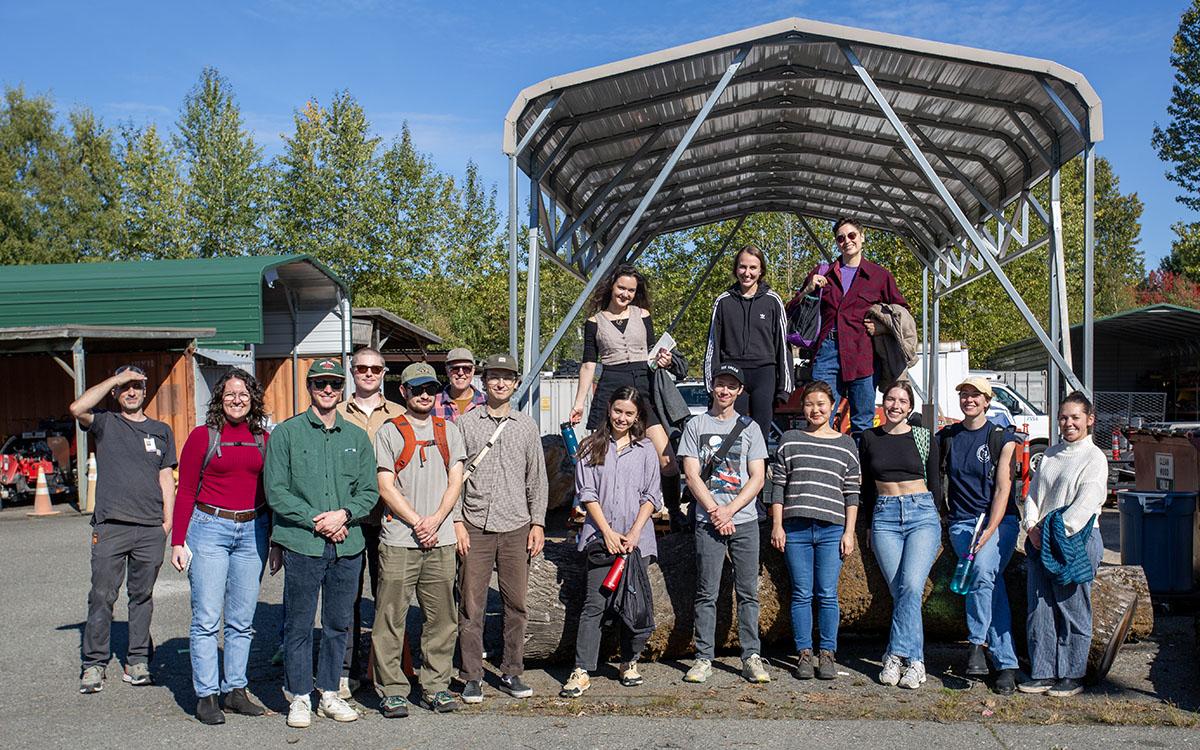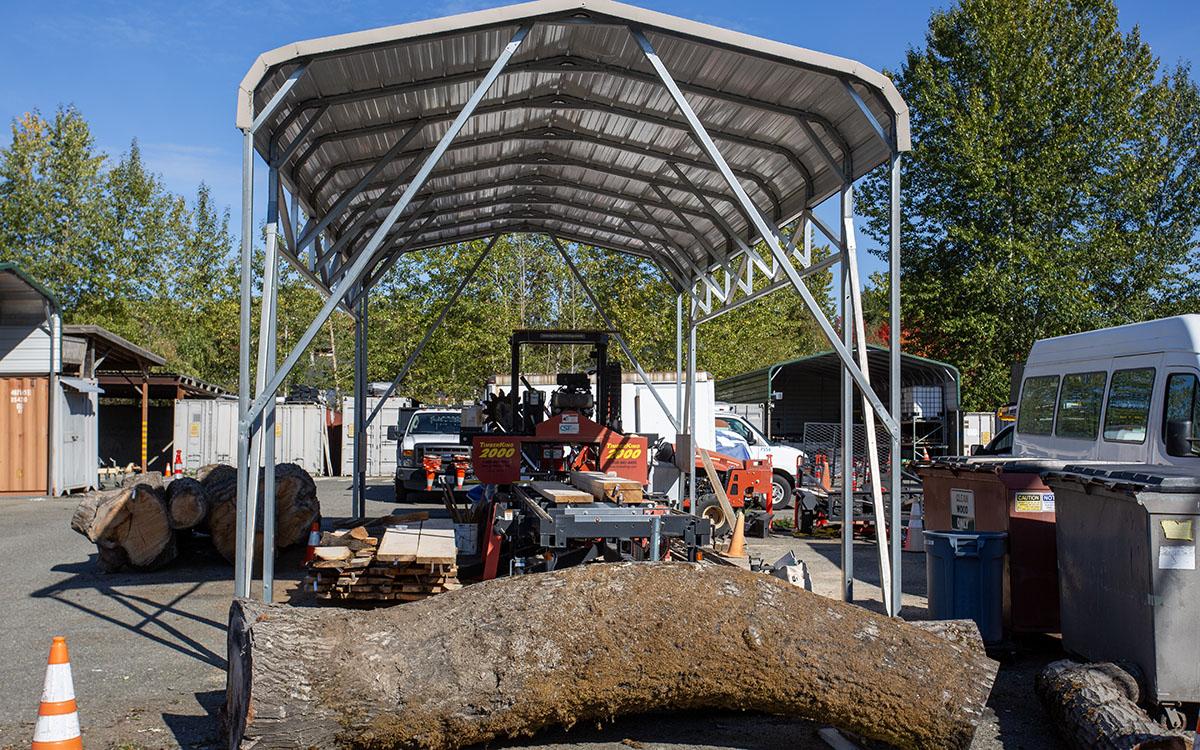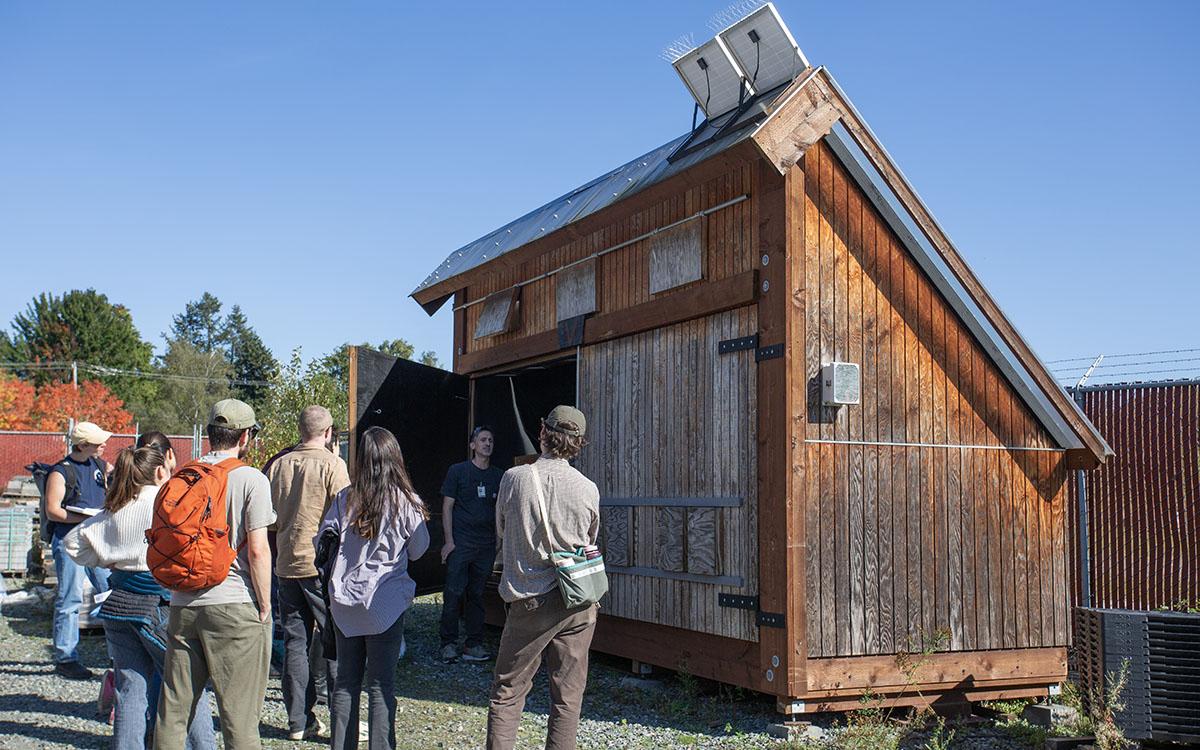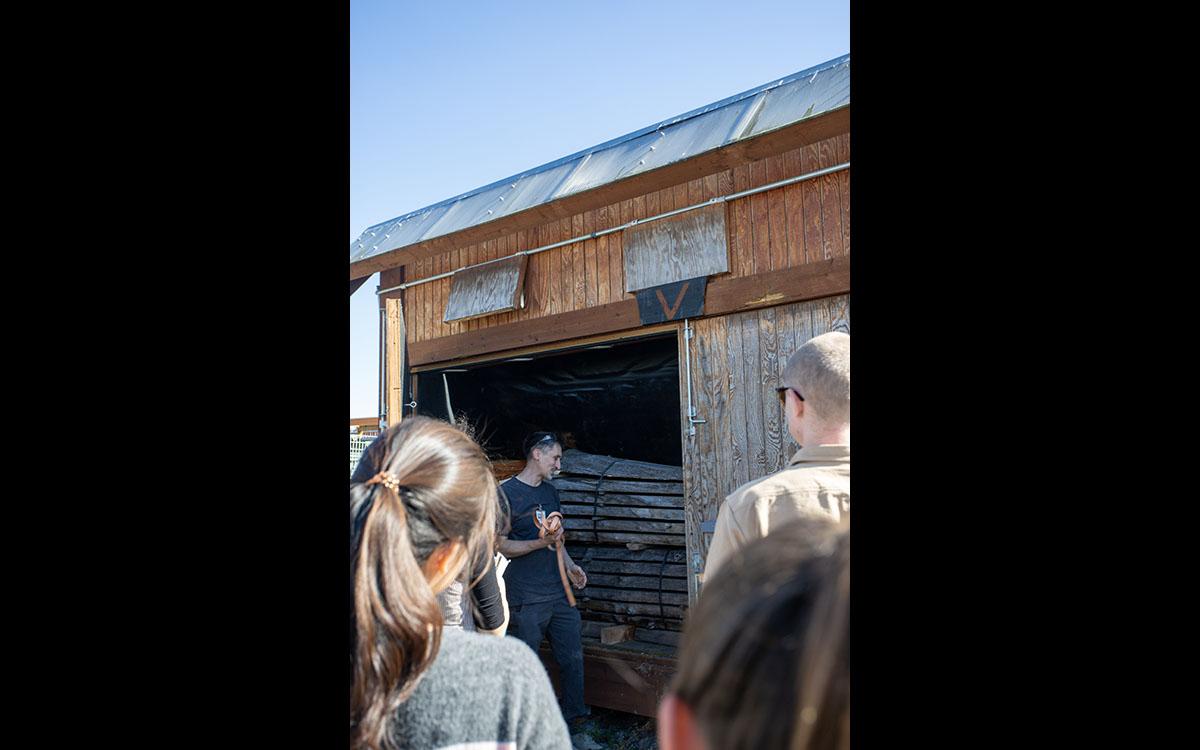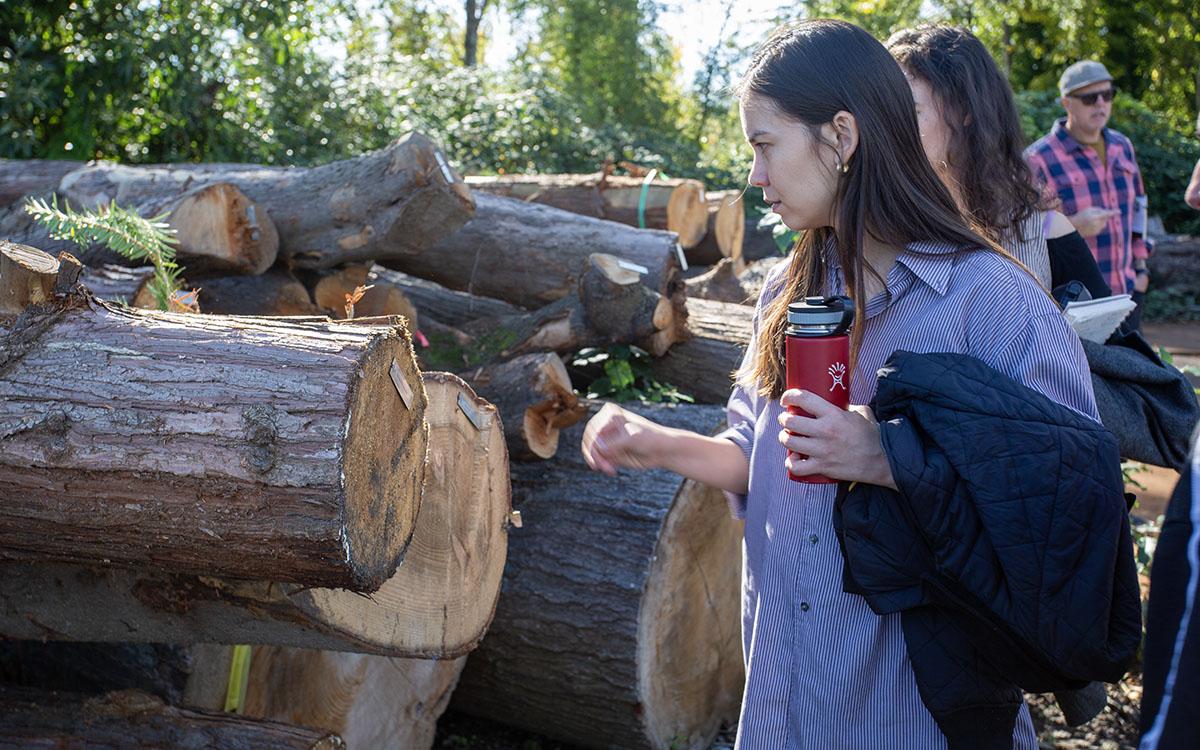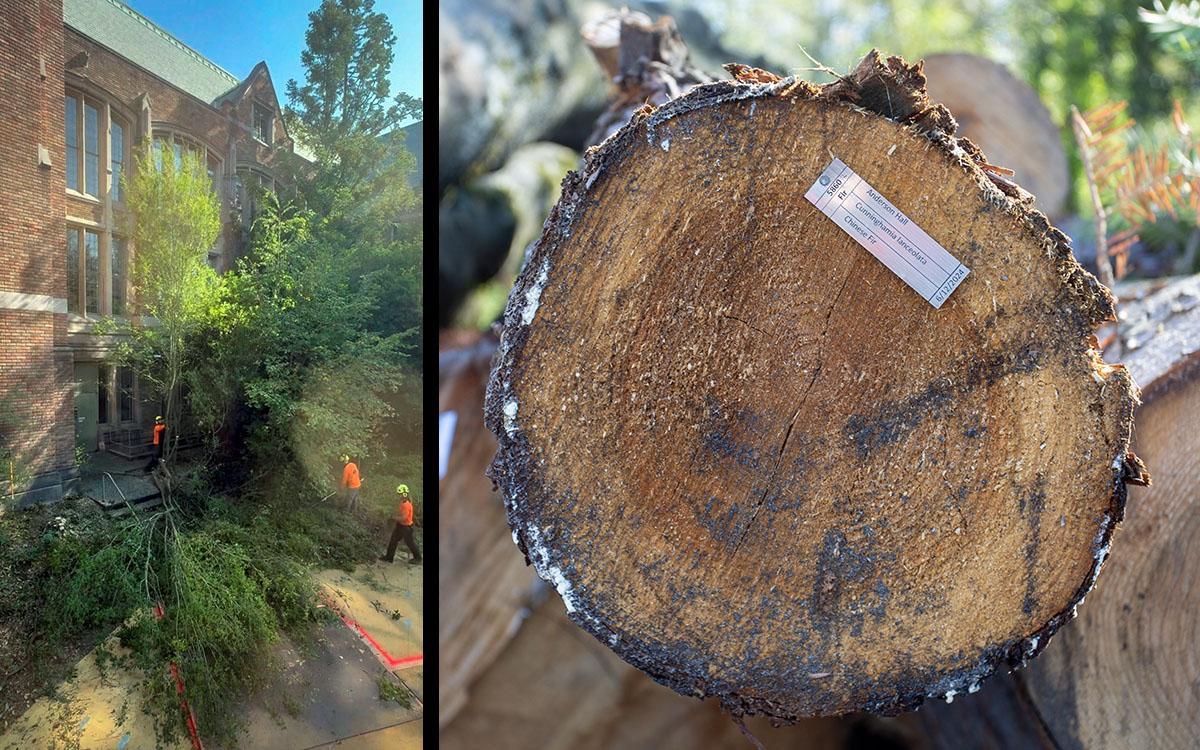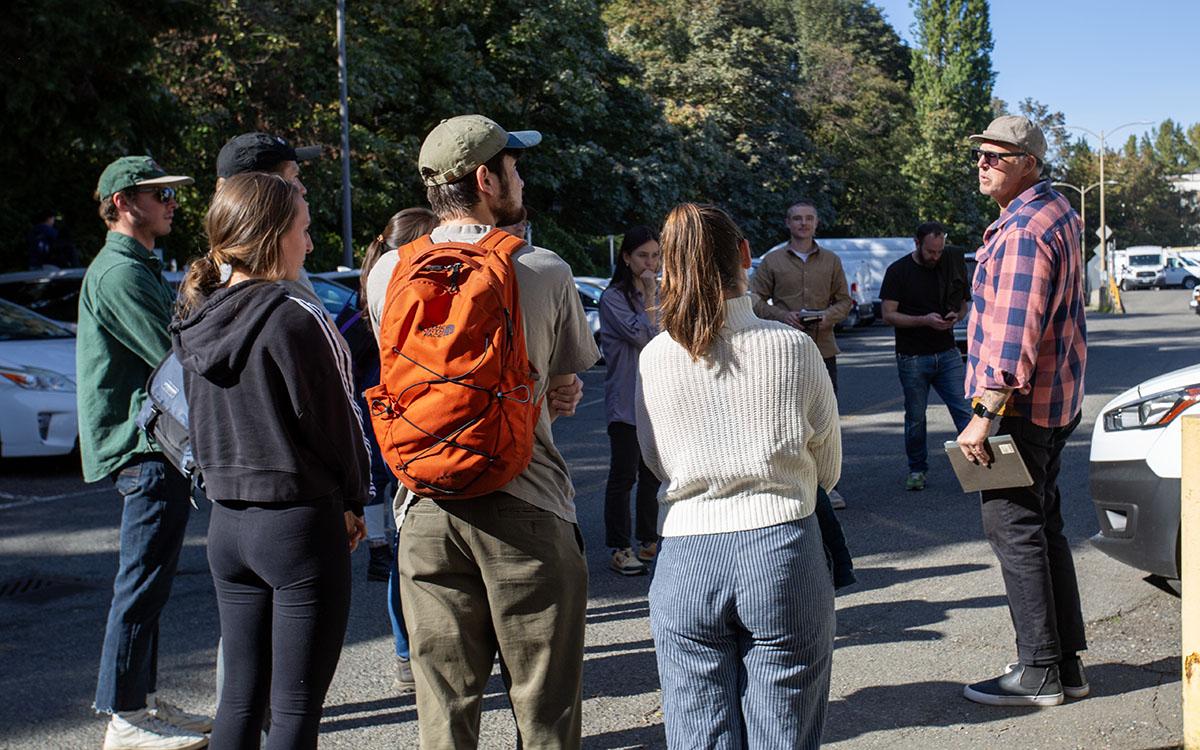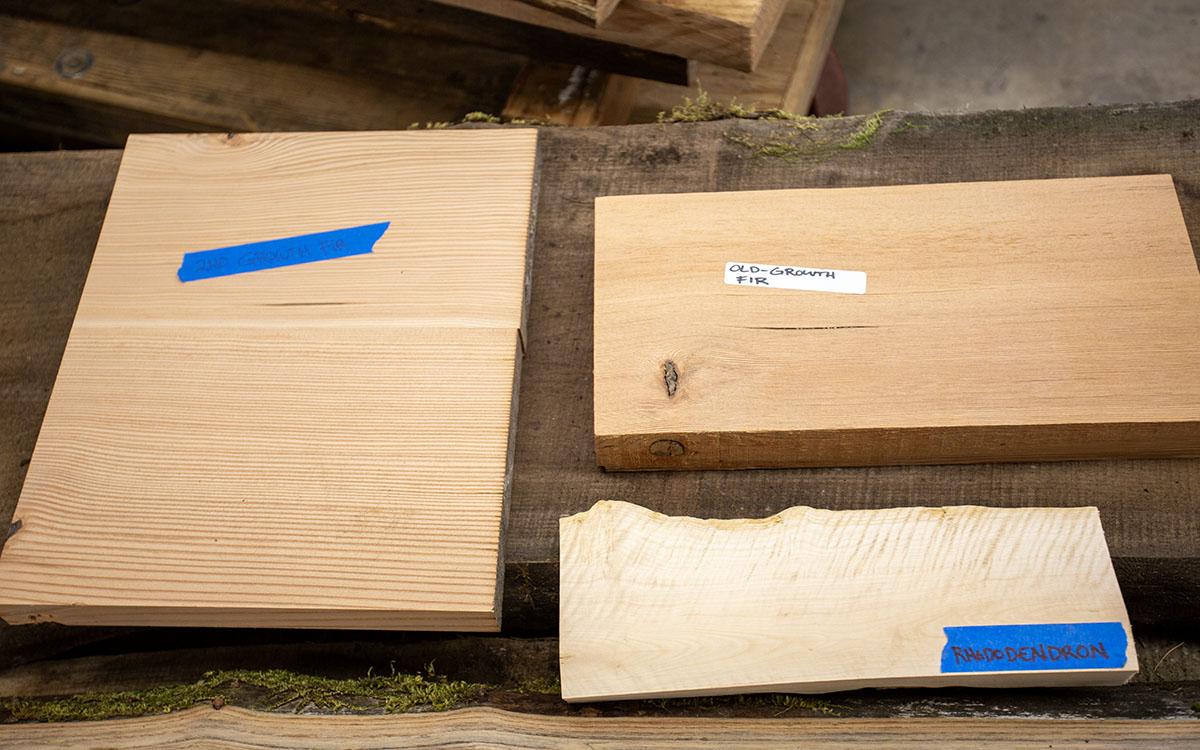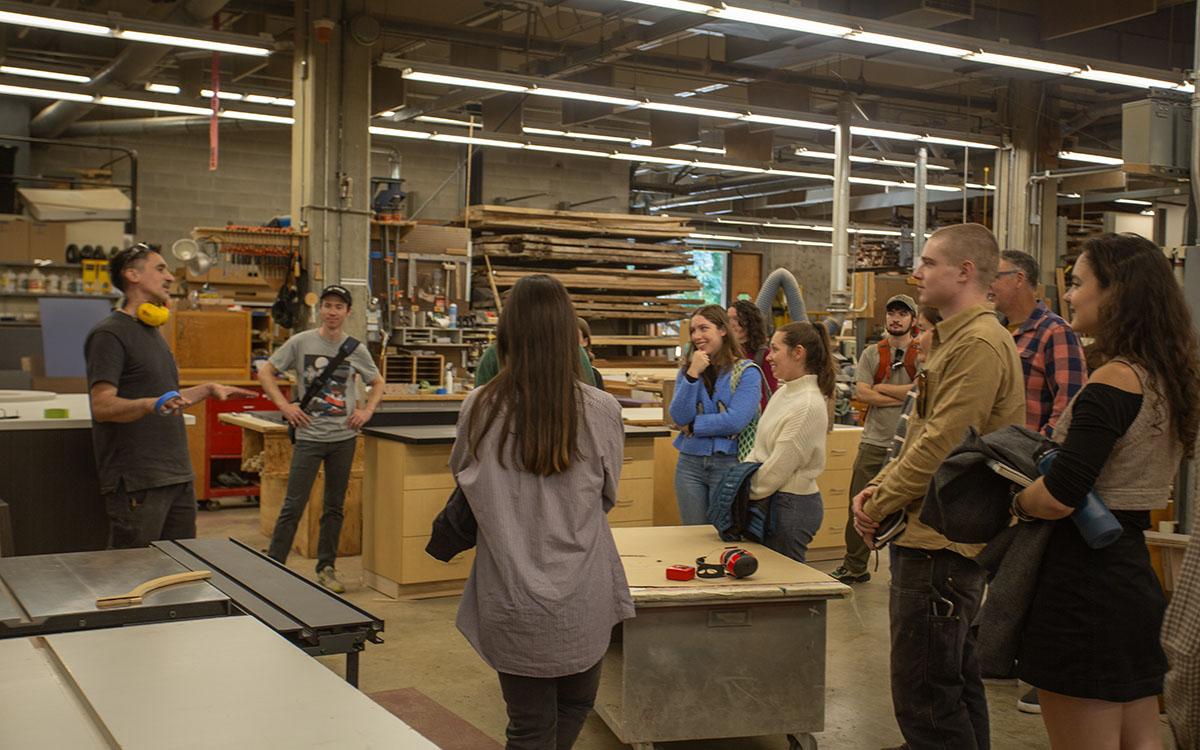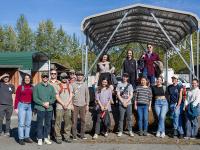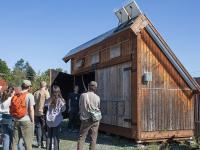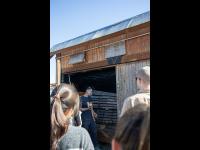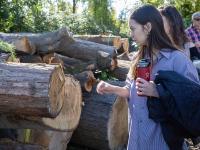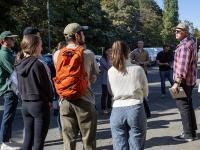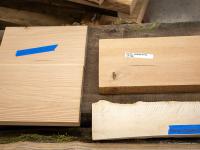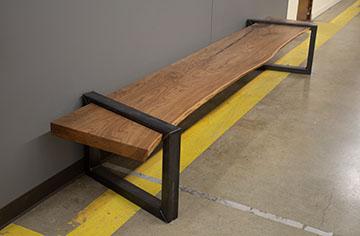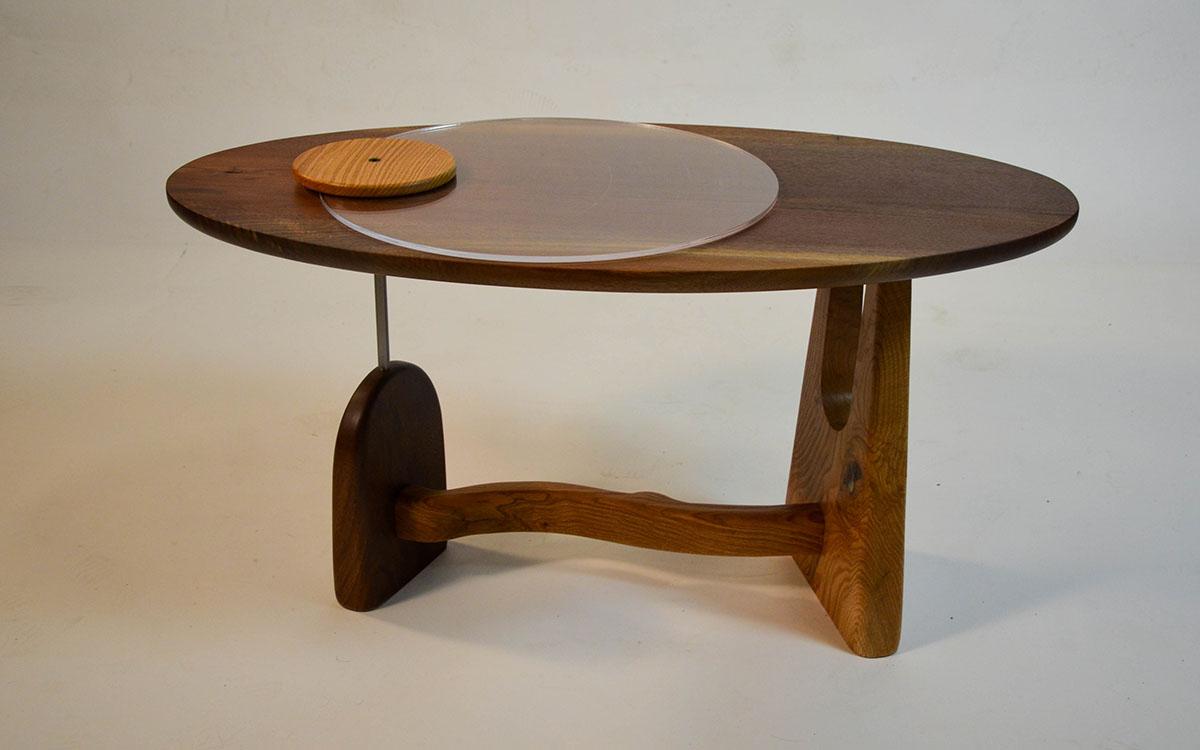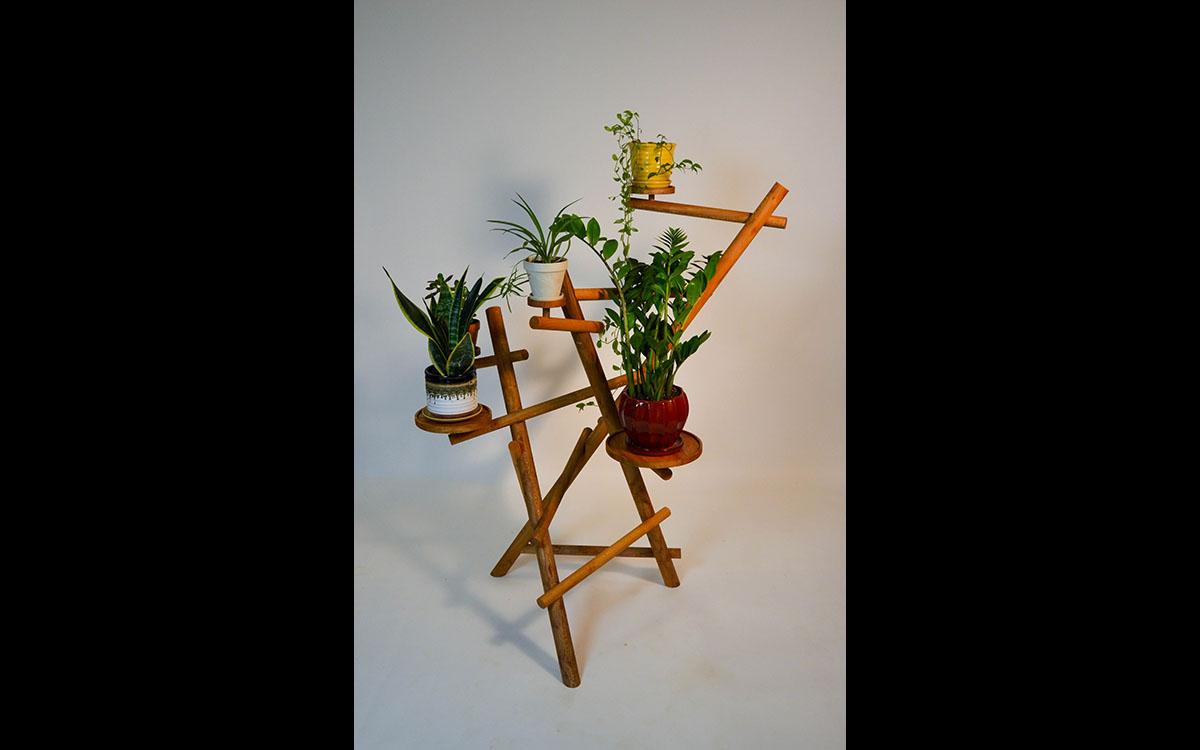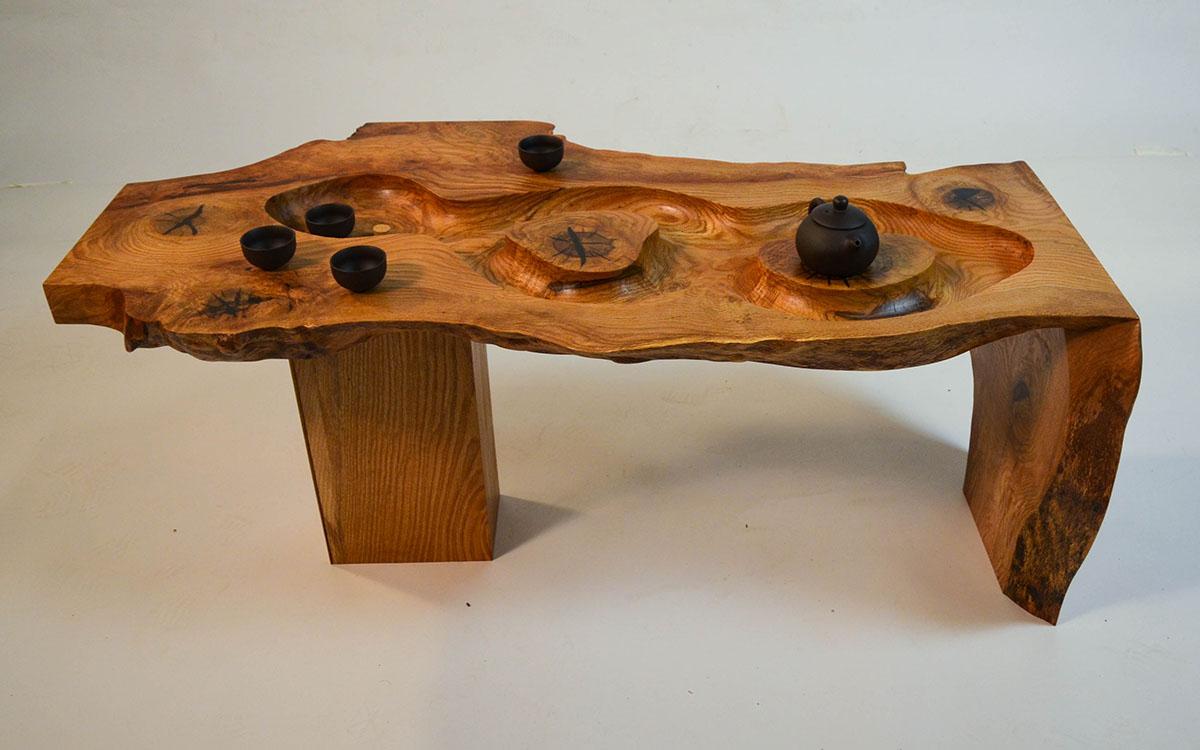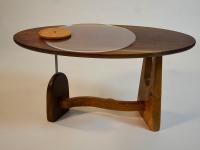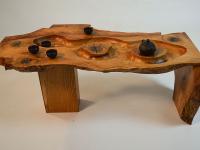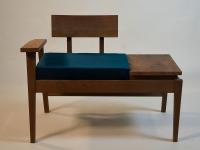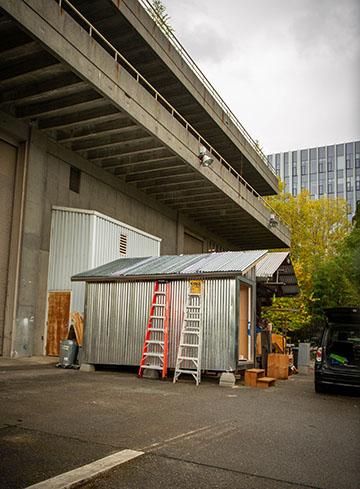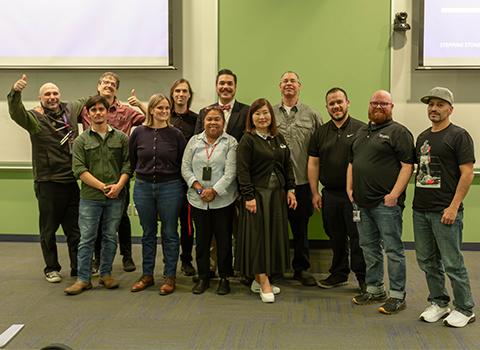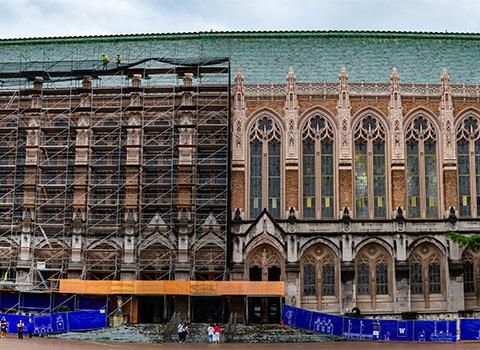Building student connections with salvage wood
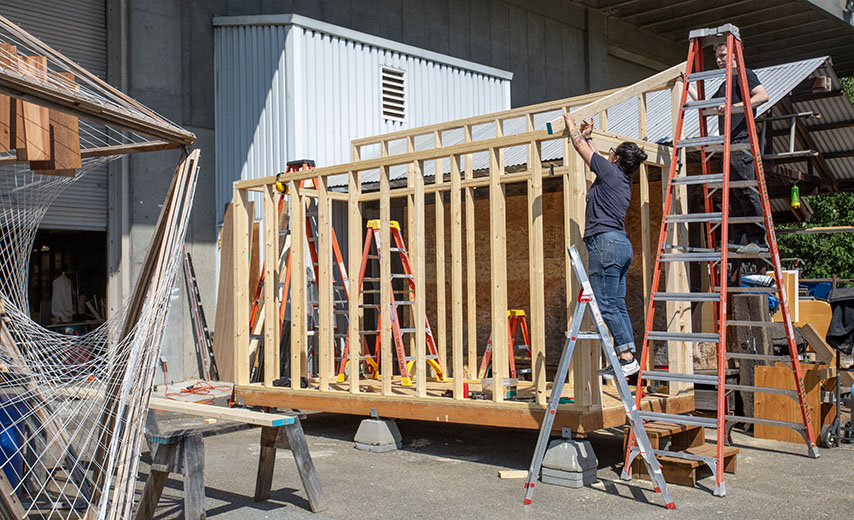
Rae Moore and Jack Bowen, staff at the College of Built Environments' Fabrications Labs, build a shed for storing salvage wood outside of Gould Hall. Misty Shock Rule/University of Washington
UW Facilities’ Salvage Wood Program gives campus trees a second life. When trees need to be cut down — due to construction, natural death, disease or other reasons — Facilities staff save the trees from the compost pile and transform them into usable wood for construction or woodworking.
Now those trees are getting another life — as educational material. Together with the College of Built Environments (CBE), UW Facilities (UWF) is building a pipeline to supply salvage wood for furniture-making classes and to other CBE students.
CBE offers a furniture studio class for architecture and landscape architecture students, where they design and build furniture. Students have to buy hardwood for the class themselves, and the best lumberyard is far from campus in the SODO neighborhood.
Rae Moore is the director of CBE’s Fabrication Labs, a maker space for students to do woodwork, metal work, digital design and more. She said that not everyone can afford the cost of wood, and not everybody has a car or truck for transporting it. She’s seen students pay as much as $1,200 for material.
Lumber through the Salvage Wood Program will now be available to students in the furniture class for free and to other CBE students at a much lower cost — sometimes half or a third of what students would find at a lumberyard. It will be easily accessible at a newly built storage shed at Gould Hall.
Campus Sustainability Fund supports partnership
Campus Sustainability Fund supports partnership
The new storage shed and other expenses, such as subsidizing the cost of lumber for students and paying for UWF staff time, are supported for by a $72,400 grant from the Campus Sustainability Fund (CSF).
The Salvage Wood Program began supplying wood to students taking CBE’s furniture studio class last year. With this year’s expansion, the lumber will be available to any CBE student. And if the collaboration is successful, there’s potential down the line for CBE to take over costs and for students at other UW colleges and schools to access the wood.
"It's great because it's benefiting the students. It's benefiting everybody,” said UW arborist Sara Shores. “This is like a built-in conveyor built going to students. I can’t think of a better cause.”
The Salvage Wood Program was started in 2016 by UWF carpenter Ed McKinley and Shores with the support of another CSF grant. When McKinley passed away in January 2023, there was some question whether the program would continue, considering the time and staffing it takes, Shores said.
Carpenter Morgan Holtz said he was very interested in keeping the program going. The transition offered an opportunity to discuss what was and wasn’t working.
Traditionally, the salvage wood was used for items such as conference tables and plaques. But with the wood piling up, there was fear some of it would rot. The collaboration with CBE is now giving the program a new customer base.
“I think one of the biggest things is that now every time we go down to the sawmill, we'll be thinking about the students and their needs before we start cutting anything,” Holtz said. “Sometimes you mill up a beautiful thing, and it would sit there. This gives us a clear application for the wood that'll be consistent.”
Lessons on sustainability
Lessons on sustainability
Along with providing material for classes, the Salvage Wood Program also teaches students about sustainability. The program reuses wood that would normally become compost or wood chips. Storing the wood nearby means students don’t have to use carbon-emitting vehicles to access it.
Plus, students who use salvage wood know their lumber was sourced in a sustainable way, something that’s less clear at a commercial lumberyard, Moore said.
“I think more woodworkers should probably question where their materials come from. And hopefully this is a way to start that conversation,” she said.
Holtz gives students a tour of the UW saw mill each quarter. He talks to them about the wood production that happens there, and he also shares his experience with sustainable forestry.
He said that it’s good for future architects to think about what’s displaced when buildings are constructed.
“It’s important to recognize the inherent value of wood and trees to humans and our surrounding complex ecosystems,” he said. “Salvaging the trees from the UW campus is one concrete way of demonstrating our dependence on our ecosystems and why we should be concerned with how construction activities impact them.
“I think it's really appropriate for architecture students to have that conversation, but I think it’s something all of us who use the buildings on campus should talk about.”
